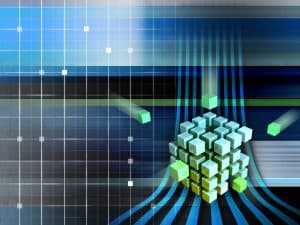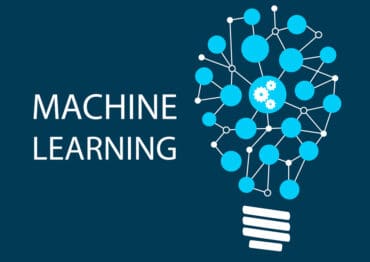
Graph analytics is finding innovative applications in financial services, healthcare, pharmaceutical, telecom, and other industries.
Quickly deriving insights and relationships from massive unstructured datasets is a common need across many industries. Graph analytics is emerging as an essential tool in use cases that need fast action. To learn more about the area, RTInsights recently sat down with Farshid Sabet, Chief Business Officer at Katana Graph, to discuss the power of graph analytics in the healthcare, pharmaceutical, financial services, telecom, and other industries. Here is a summary of our discussion with Sabet.
RTInsights: What types of general applications benefit from and need graph analytics?

Sabet: Any application with connected data and a large data size can benefit from [graph analytics]. Financial transaction data, social networks connections, medical knowledge sources, telecom, where each subscriber is connected to other subscribers, and main tower are examples of connected graph data.
RT Insights: What markets and vertical industries are using graph analytics?
Sabet: Graph analytics is used effectively in financial, security, health, and life sciences, and many more markets. Pharmaceutical companies use graph analytics and graph mining for various use cases, and they have employed teams of scientists to develop knowledge graphs to use data for faster drug discovery or more in-depth analysis. Knowledge graphs connect all relevant chemical, biological, clinical research, patient information, medical journals together along with all pertinent data such as drug side effects, the genetic information of the patients and users. All of that information quickly becomes large connected data. These knowledge graphs enable new fronts in drug discovery and enable new fields such as precision medicine.
In the financial, banking, and FinTech sectors, graphs analytics are used to combat fraud or detect money laundering schemes. In telecom, some carriers are using graph analytics for spam detection and for providing more precise services to subscribers.
RT Insights: Graph analytics is an evolving area. What were people doing prior to graph analytics in these use cases? What is it enabling these use cases or these markets that you just talked about?
Sabet: Data analytics is not a new field and has been around a while. It evolves every couple of years with new advances in technology and computation. Data volume is ever-increasing, and there is a need for faster data analysis. We have a tsunami of data coming, and yet there is a push for even faster time to insight.
In the past, we were happy to be able to analyze the data through batch mode transactions periodically. There is an increasing demand to analyze data at a faster pace. If you want to analyze something in real-time for applications such as fraud detection, there are not many options available. For pharmaceuticals or drug discovery, there is a demand to shave time off clinical trials. Our goal is to allow faster analysis, flexibility in analyzing various unstructured data types, and enable analysis of larger volumes of data.
We are seeing an amazing rate of progress in higher performance CPUs and new hardware architectures such as GPUs, XPUs as well as Memory devices. New software graph technologies are designed to take advantage of these new hardware platforms to tackle data mining and data analytics challenges.
RT Insights: What are some of the use cases in healthcare and pharma? Could you go into a little more detail about how graph analytics is helping?
Sabet: We are seeing advanced innovation in graph analytics, mining, and AI within the pharmaceuticals market. Scientists are interested in taking advantage of increasing sources of data. They’re adding more information ranging from patient information, genetic information, scientific literature to drug side effects. These scientists use the latest research in AI, machine learning, deep learning, and graph technology to derive value and insights from data.
There are new fields such as graph neural networks that are merging AI and graph analytics. Some of these techniques are similar to deep learning techniques that have been utilized for medical image classification but applied to amorphous unstructured graph networks.
RT Insights: How about the use cases in financial services? How are these companies using graph analytics?
Sabet: Financial services are one of the big markets for graphs analytics and graph mining. Katana Graph is augmented existing fraud detection and intrusion detections with richer capabilities for deep links analysis, faster anomaly detection, and other advanced capabilities. Our partners want to go further and detect a threat before it happens.
RT Insights: There’s a shortage of data scientists, and they can’t be as productive as they need to be. And you need such tremendous expertise, but they’re in such short supply. Is that an important part of your go-to-market and direction? Is it important to have easier ways to get people, who are not experts in data science, to be productive with your system?
Sabet: One of the areas that makes Katana attractive is that we bridge the gap between the people familiar with declarative languages like SQL and data scientists who want to do more complicated data mining analytics with Python and C++. We have developed capabilities for various investigators from IT professionals, data analysts to data scientists to be able to take advantage of the capabilities of our graph engine by languages and API libraries familiar to them to allow them to pursue their investigation, development, and research. We have abstracted complexities of parallel programming, distributed architectures, abstruse graph algorithms without sacrificing power and flexibility to make graph technology accessible to various professionals depending on their appetite and need. We are constantly adding more to these graph analytics, mining, and graph AI libraries to solve some of these problems for developers and our partners.







